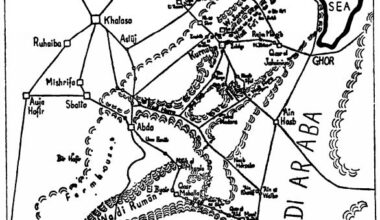Project summary
The Badia Epigraphic Survey Project locates, records, and provides precise geographical information for all the Safaitic inscriptions carved by ancient nomads in the basalt deserts of southern Syria, north-eastern Jordan and parts of northern Saudi Arabia, in the late Hellenistic and Roman periods.
Project details
Location: Syria, Jordan, Saudi Arabia
Year(s): 2018
Project director(s): Michael Macdonald (University of Oxford)
Lead institutions and funding:
- Department of Antiquities of Jordan
- CBRL
- Wolfson College Oxford
Project description
The Safaitic inscriptions are graffiti carved by ancient nomads in the basalt deserts of southern Syria, north-eastern Jordan and parts of northern Saudi Arabia, in the late Hellenistic and Roman periods. This was the only period in their history when the nomads of this region were literate, and they used their skills to pass the time during the long hours of solitary idleness when they were pasturing the flocks and herds or keeping watch for game or enemies.
There are scores of thousands of these text and because their authors had plenty of time, they often wrote at some length describing their daily life, their personal feelings, their relations with their neighbours and with the states in the settled regions such as the Romans, the Nabataeans and the Jews, as well as carving a large number of prayers for safety, rain, booty, reunion with loved ones, etc. We have no equivalent sources for the lives of those who lived in villages and cities since if they did write graffiti it has long since been destroyed along with any other personal texts. In addition, in the Badia, there are a small number of Greek, Nabataean, and Palmyrene graffiti and hundreds of mediaeval and modern Arabic texts, as well as rock art ranging from Neolithic drawings of cattle to modern representations of trucks!
The Badia Epigraphic Survey Project is a joint project of the Department of Antiquities of Jordan, CBRL, and Wolfson College
Oxford. It locates, records, and provides precise geographical information for all of these. Since 2015, the project has worked in many different parts of the basalt desert not only recording new inscriptions but locating those which were inadequately recorded in the days before digital photography and GPS. It has now made complete and systematic surveys of many of the areas where these were found, photographing thousands of inscriptions within their geographical and epigraphic contexts, and pinpointing their locations using GPS. The vast amount of information resulting from these surveys is in the process of being entered in the Online Corpus of the Inscriptions of Ancient North Arabia (OCIANA).
Project bibliography
Macdonald, Michael. 2020. Badia epigraphic survey project. Bulletin of the Council for British Research in the Levant 2018-2019, p 19.
Macdonald, M.C.A. and Al-Manaser, A. 2019. ‘Recording graffiti in the Black Desert: past, present, and future’. Journal of Eastern Mediterranean Archaeology & Heritage Studies 7, no. 2: 205–222.
Published:26 November 2021
















